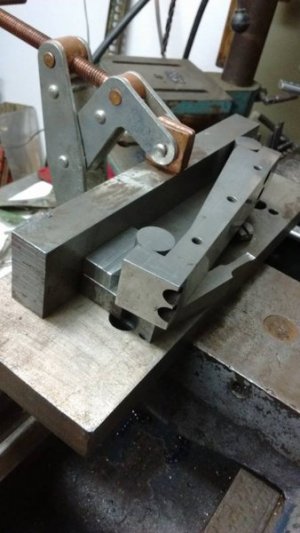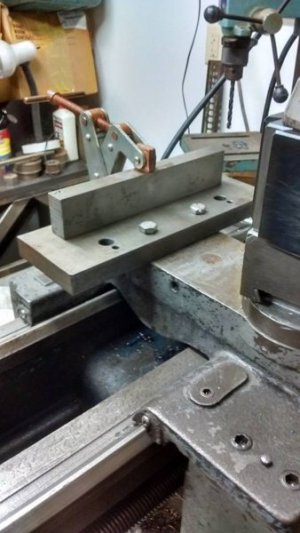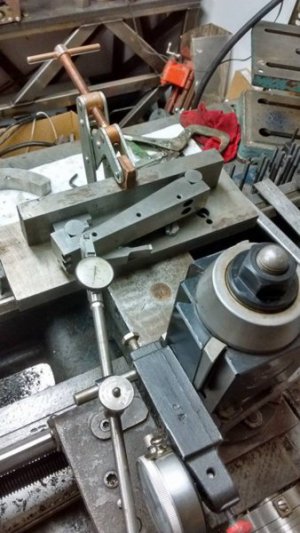- Joined
- Jan 23, 2017
- Messages
- 228
Bolt a tooling plate to your cross slide
Clamp a straight parallel to it and dial it in with the indicator base on the lathe bed
Using gage blocks or an adjustable parallel set up a sine bar to the desired angle (sine of the angle X length of the sine bar)
Put the indicator on the tool post and dial in the compound. The sine bar must stay put for this. I just held mine here with a thumb. If it moved during slide angle adjustments, so what. I was looking for dial travel when cranking the slide.
Enjoy



Clamp a straight parallel to it and dial it in with the indicator base on the lathe bed
Using gage blocks or an adjustable parallel set up a sine bar to the desired angle (sine of the angle X length of the sine bar)
Put the indicator on the tool post and dial in the compound. The sine bar must stay put for this. I just held mine here with a thumb. If it moved during slide angle adjustments, so what. I was looking for dial travel when cranking the slide.
Enjoy




